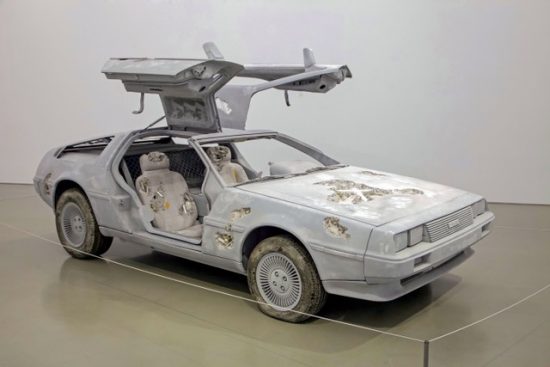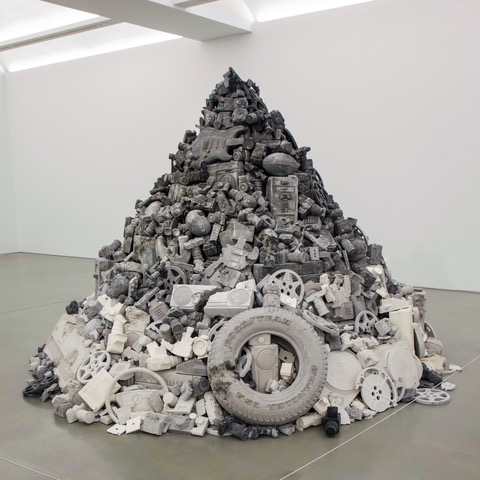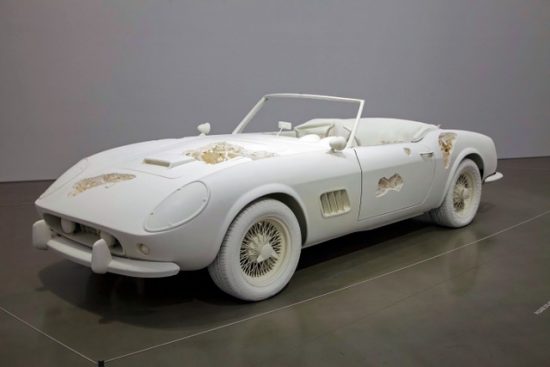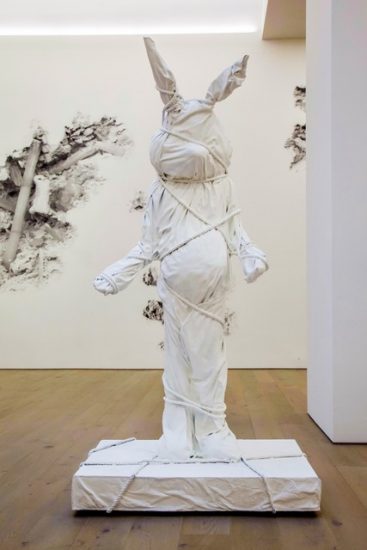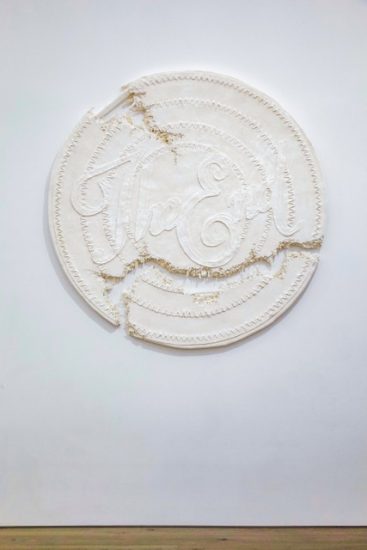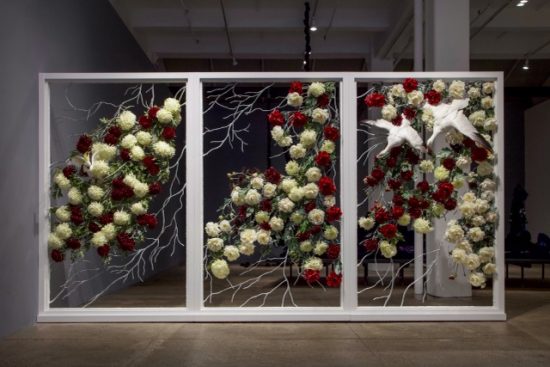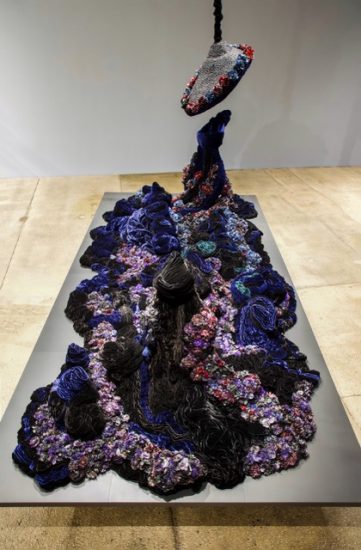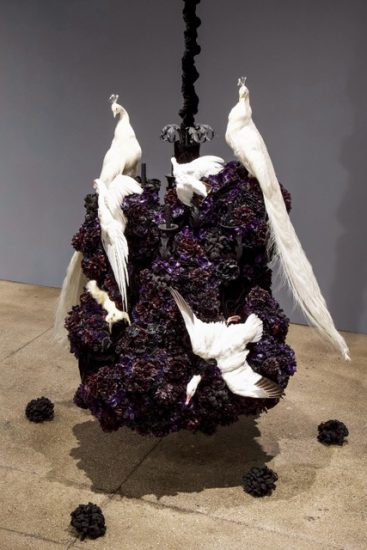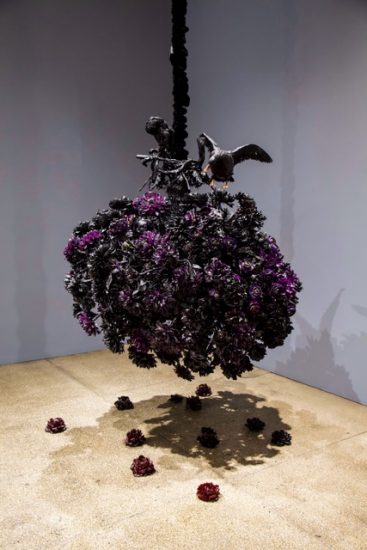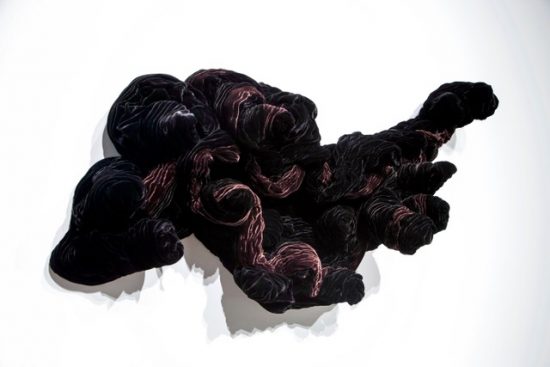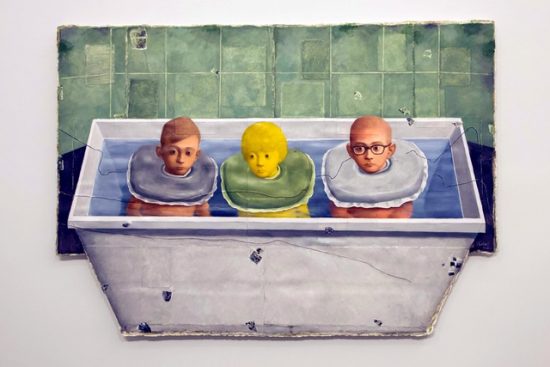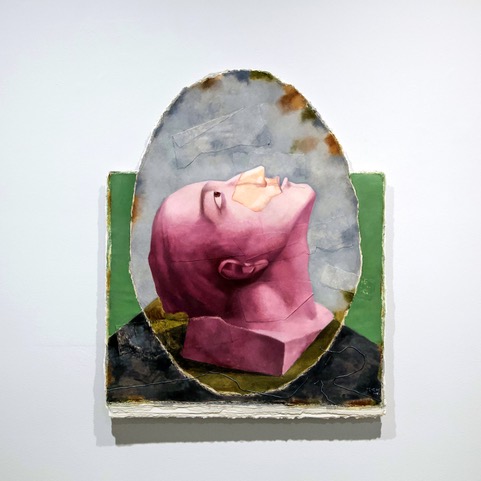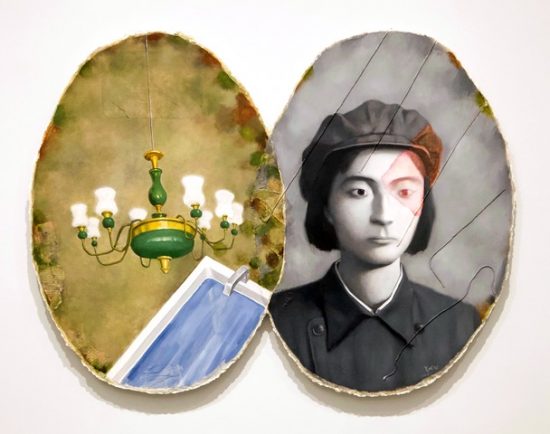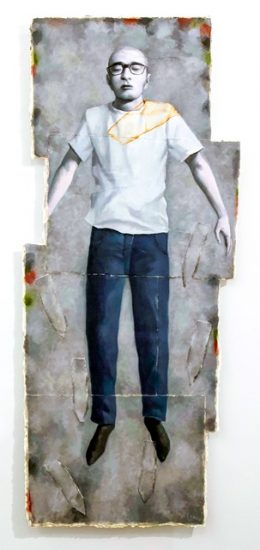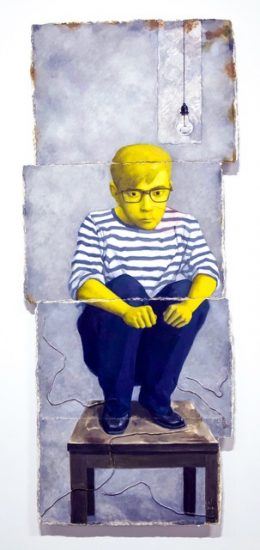George Shaw reports from a thousand years in the future…
Daniel Arsham, Eroded Delorean, 2018
Daniel Arsham, Welcome to the Future, 2015
Daniel Arsham, Eroded Ferrari, 2018
Daniel Arsham, Large Wrapped Animal, 2018
Daniel Arsham, Patch #7, 2018
Good news: the 1961 Ferrari California from Ferris Bueller’s Day Off survived its plunge into the ravine. Bad news: it’s the year 3018 and its reappeared looking osteoporotic and sprouting minerals, as if they were sci-fi weeds. Same for the Delorean from Back to the Future. And a panoply of consumerist detritus once coveted, loved and eventually lost. At Galerie Perrotin, Daniel Arsham continues to project his vision of a dystopian future in which culture has eroded and the popular markers of yesteryear are confined to a collection of oddities.
Petah Coyne, Untitled #1388 (The Unconsoled #1), 2013-14
Petah Coyne, Untitled #1379 (The Doctor’s Wife), 1997-2018
Petah Coyne, Untitled #1375 (No Reason Except Love: Portrait of a Marriage), 2011-12
Petah Coyne, Untitled #1408 (The Lost Landscape), 2015-18
Petah Coyne, Untitled #1289 (The Year of Magical Thinking), 2008-17
Galerie Lelong’s artist/exhibition statement tells us that Petah Coyne’s work is deeply personal and psychological, and that she is influenced by literature, literary figures, as well as Japanese film. In fact, the works in this show are all named after favourite novels and memoirs. However, in the absence of such details, you can easily give in to tides of seductive Venetian velvet, planets and portals of silk flowers dipped in wax, and taxidermic exotica. And yet, beneath the lush baroqueness, there is a palpable sense of grief and elegy, albeit elegant.
Zhang Xiaogang, Bathtub, 2018
Zhang Xiaogang, Mirror No.1, 2018
Zhang Xiaogang, Mirror No.2, 2018
Zhang Xiaogang, Jump No.2, 2018
Zhang Xiaogang, Man on a Stool No.1, 2018
Zhang Xiaogang began his rise to international stardom with the first show of his signature series Bloodline: Big Family in 1995. After many iterations over twenty years, Xiaogang’s new work at the Pace Gallery departs from the formal family portraits in which subjects are linked through a distinctive red (blood) line to focus mainly on individuals. Conceptually, the grounding of subjects in tight groups in the frame’s foreground, has given way to people appear weightless, floating as if alienated, as if yesterday’s safety (blood) line is not as strong today.
